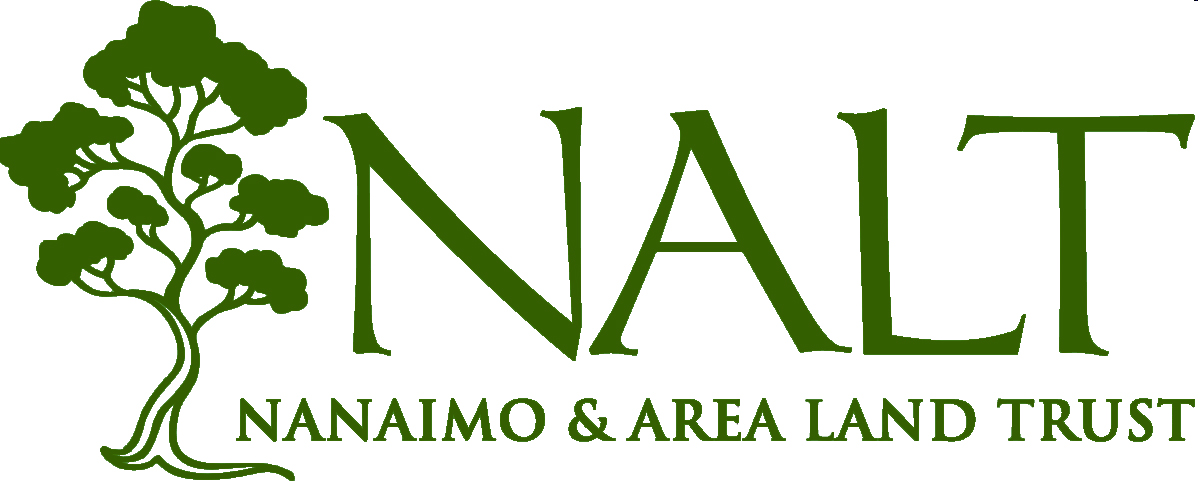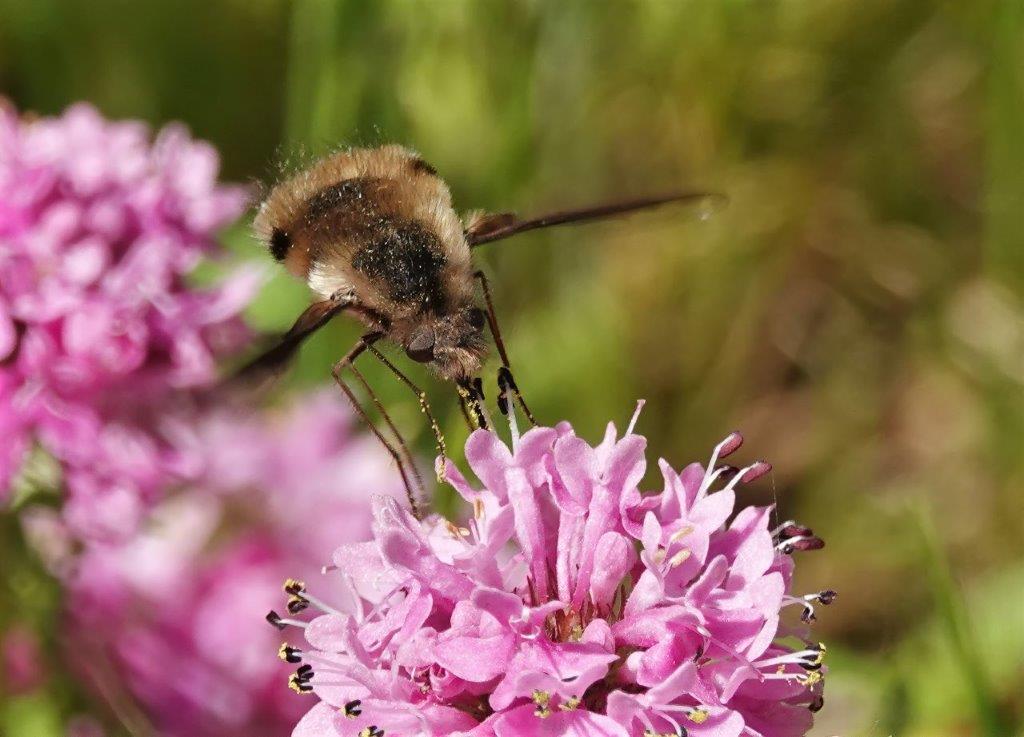IDENTIFYING POLLINATORS
When thinking about pollinators, most people think of insects – specifically bees. Although bees are common pollinators, many other groups of insects, as well as birds and small mammals are also important pollinators. Within our Pollinator Profiles page, we have included bees & wasps (Hymenoptera), flies (Diptera), beetles (Coleoptera), butterflies & moths (Lepidoptera), and hummingbirds.
HELP US TRACK LOCAL POLLINATORS
While it is beyond the capacity of the average citizen scientist to identify many pollinators down to the species level (for bees and many other insects this requires collecting samples, which means killing the specimen), it can still be extremely helpful to track what pollinators are visiting what flowers and when. There are several guides out there that can help you identify pollinating insects down to seven categories, divided by ecological roles (such as foraging practices and nesting needs) and physical characteristics (such as body shape). This level of information can provide a good sense of habitat quality and indicate overall biodiversity.
Please consider helping us track pollinators in our region by doing a simple pollinator census. This consists of sitting in your garden and monitoring a specific area (or even individual plants) for a short period – as little as 10 minutes will do – and submitting your findings to our iNaturalist group Mid Vancouver Island Pollinator project. The better the photo, the easier it is to do an identification. A series of 5 to 10 random pollinator censuses carried out throughout the growing season can provide us with invaluable information about pollinator habitat.
Anyone interested in carrying out pollinator censuses beyond their own property, please contact NALT’s stewardship manager, Linda Brooymans, at stewardship@nalt.bc.ca.
INSECTS
Bees come in a variety of colours but share very similar shapes and features. All bees have two pairs of wings (4 wings). Bumblebees are easily recognizable for their very fuzzy bodies, loud buzzing sound, and combination of white, yellow, orange and black colouration.

Orange-rumped Bumblebee on Western Columbine
at Strathcona. Courtesy of © Jason Straka on iNaturalist

Vancouver Bumblebee on Kinnikinnik in Lantzville
Courtesy of © sarahhh on iNaturalist

Courtesy of © Blair Dudeck on iNaturalist
Other types of bees can be harder to recognize. Mason and Leafcutter bees (Megachilidae) are within a group of solitary bees known as the Hairy Belly Bees. They can vary in colour from blue to black, but share a common characteristic: their hairy belly!

Western Leafcutter bee on Gumweed
at Colwood, BC
Courtesy of © David McCorquodale on iNaturalist

Courtesy of © Jason Straka on iNaturalist

Blue Orchard Mason Bee at Comox Valley
Courtesy of © Blair Dudeck on iNaturalist
Solitary ground-nesting bees are another group of pollinators that include sweat bees (Halictidae), plasterer bees (Colletidae) and mining bees (Andreidae). Of the groups of bees listed, the ground-nesters have the least amount of hair on their body and as the name suggests, can be seen emerging from their nests in the ground. Some of them are even shiny and metallic!
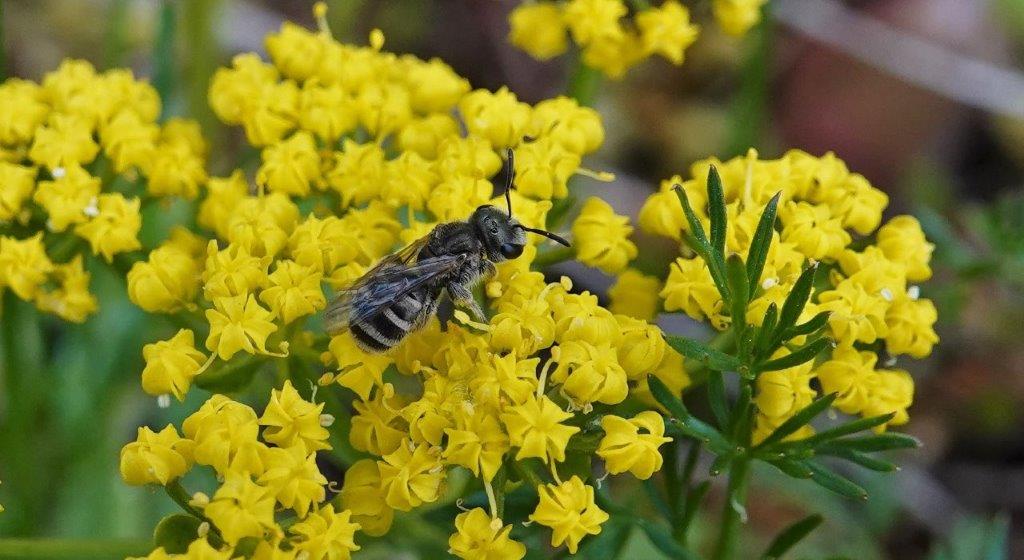
Photo Courtesy of Lynda Stevens
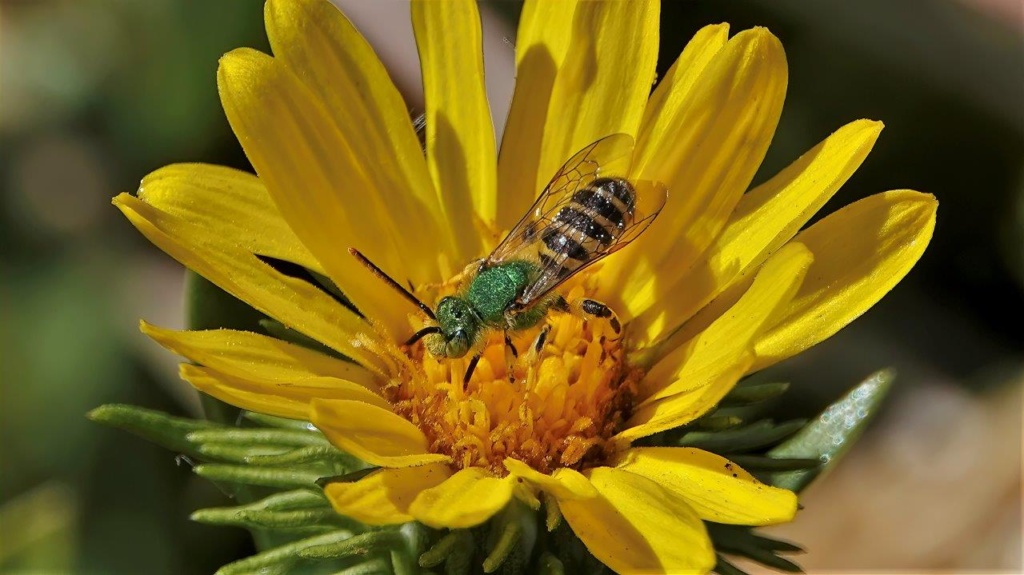
Photo courtesy Lynda Stevens
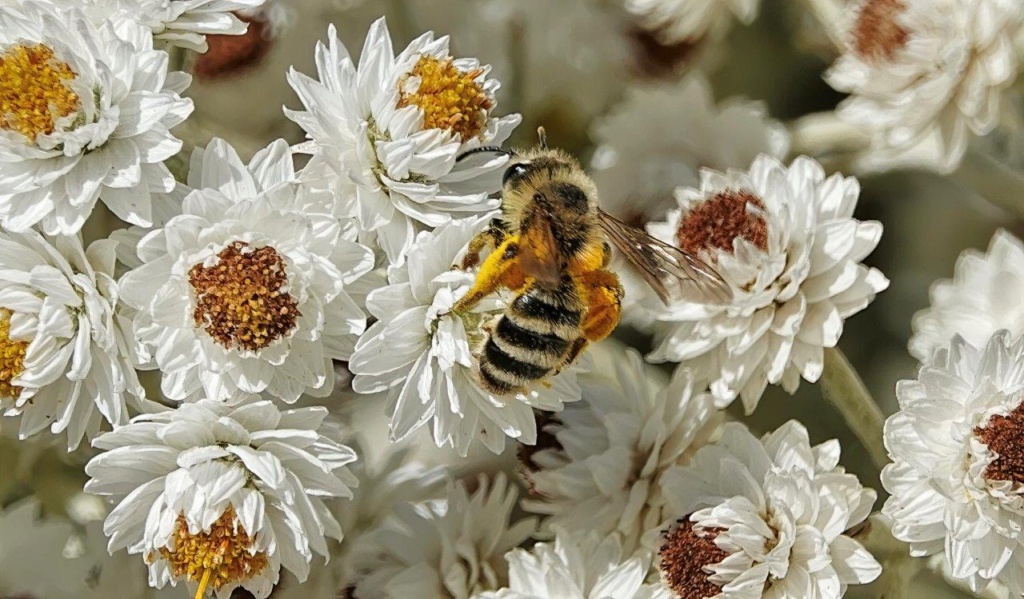
Mining bee on Pearly Everlasting
Photo courtesy Lynda Stevens
Wasps are similar in appearance to bees but can be distinguished by their smoother body and narrower waist. Like bees, they also have two pairs of wings (4 wings).
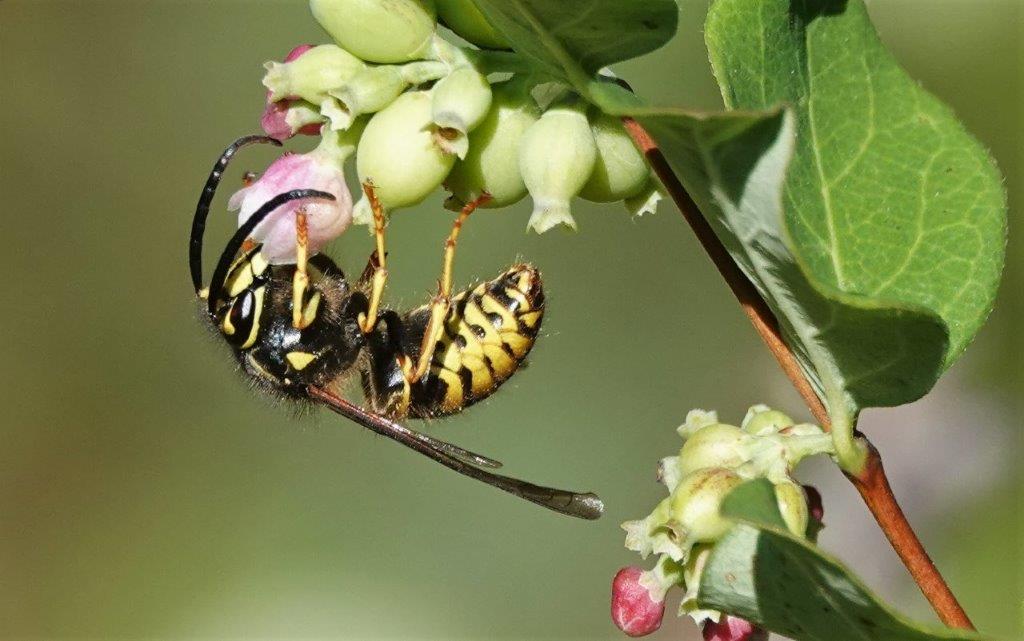
Photo Courtesy of Lynda Stevens

at Cumberland
Courtesy of © J Straka
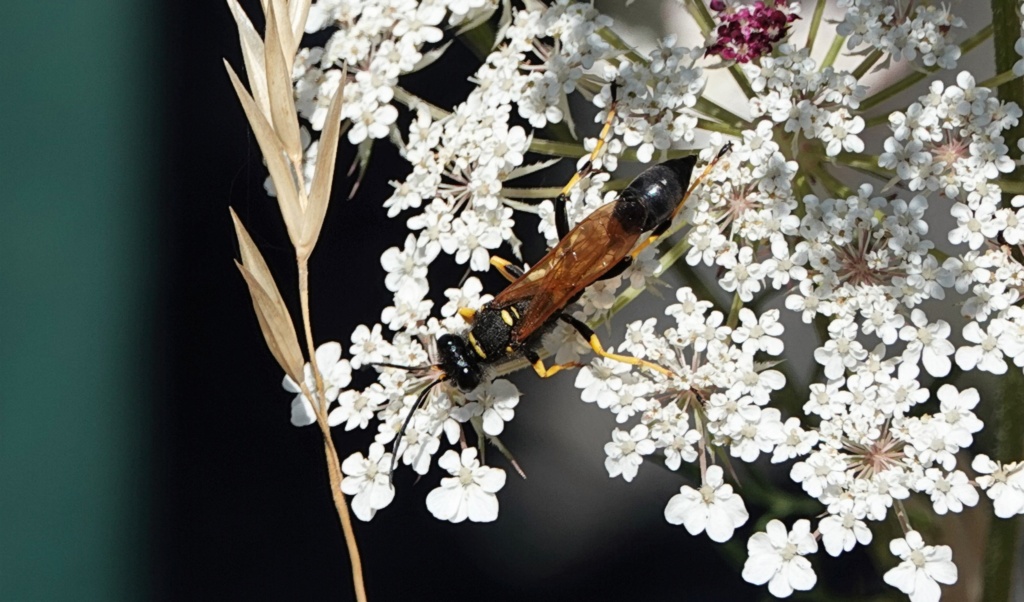
Yellow-legged mud-dauber wasp
at Cassidy
Courtesy of Lynda Stevens
Beetles are more easily distinguishable from other insects because of their often round or oval body shape and their hard outer wings called elytra. Beetles are highly diverse and come in many shapes, sizes, and colours.
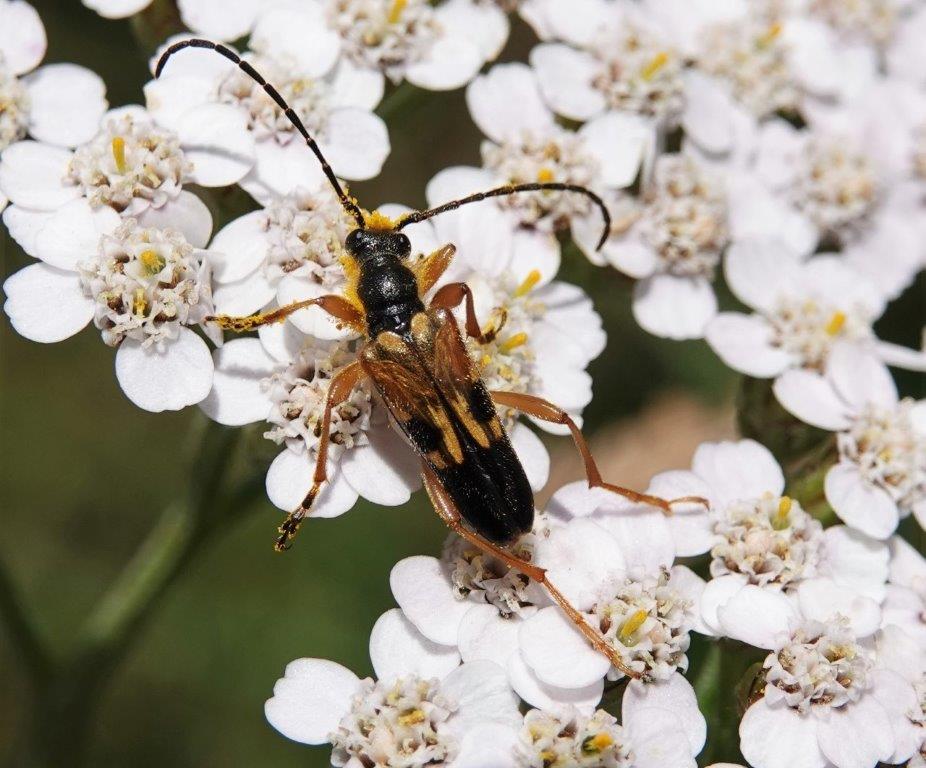
Photo Courtesy of Lynda Stevens
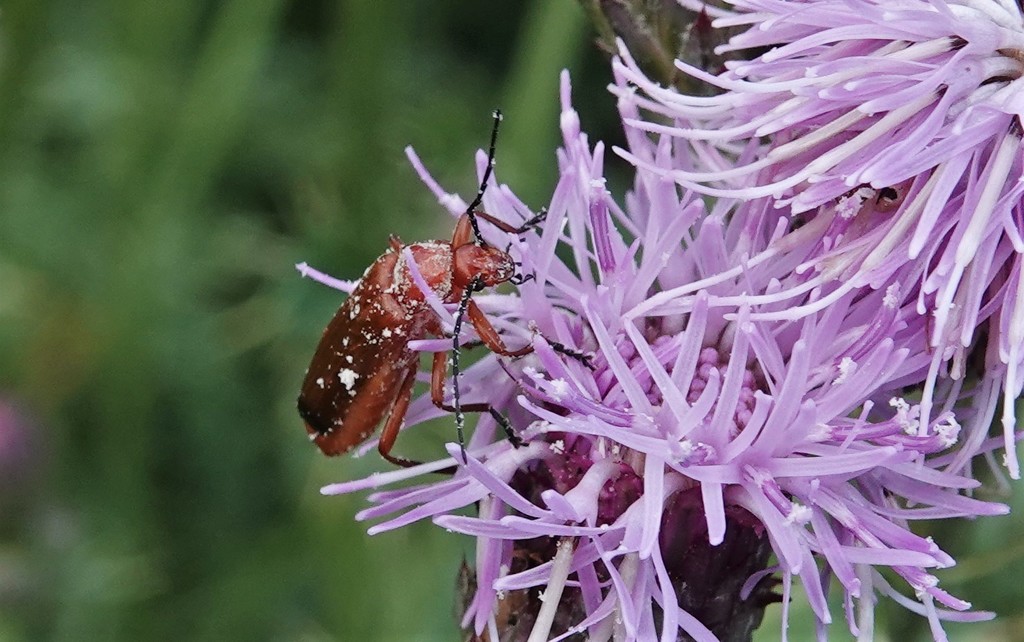
Flies can easily be confused with wasps and bees but are distinguishable because of the number of wings they have. Unlike bees and wasps, which have two pairs of wings (4 wings), flies have only one pair of wings (2 wings). Other features that may help in identification are their often large eyes and short antennae.
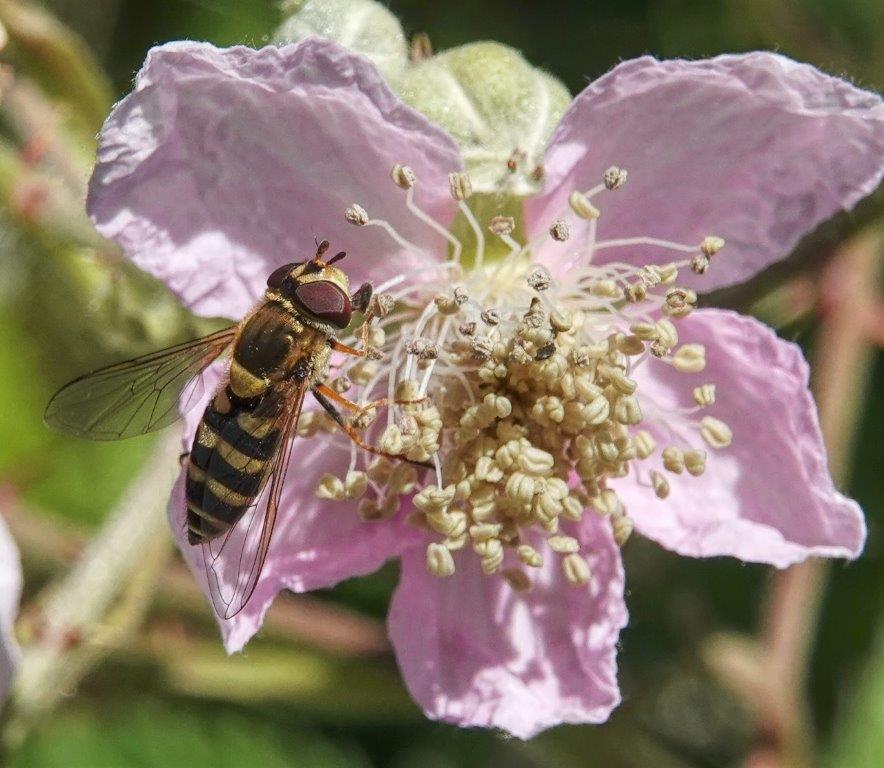
Photo Courtesy of Lynda Stevens
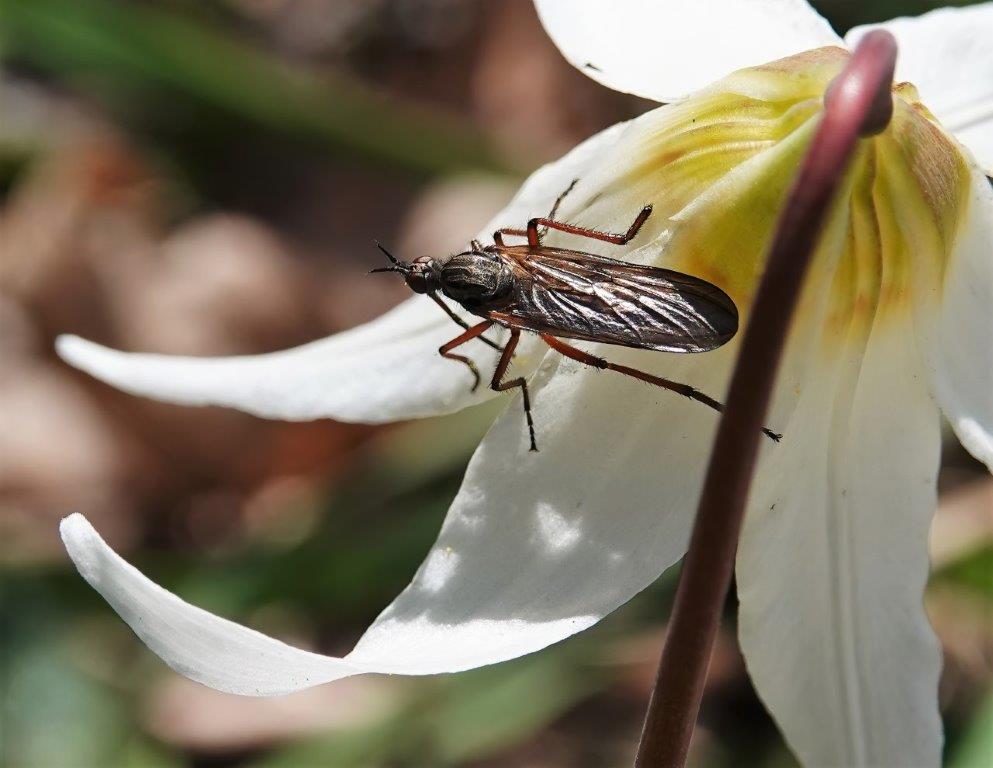
Fly species on Fawn Lily
Photo Courtesy of Lynda Stevens
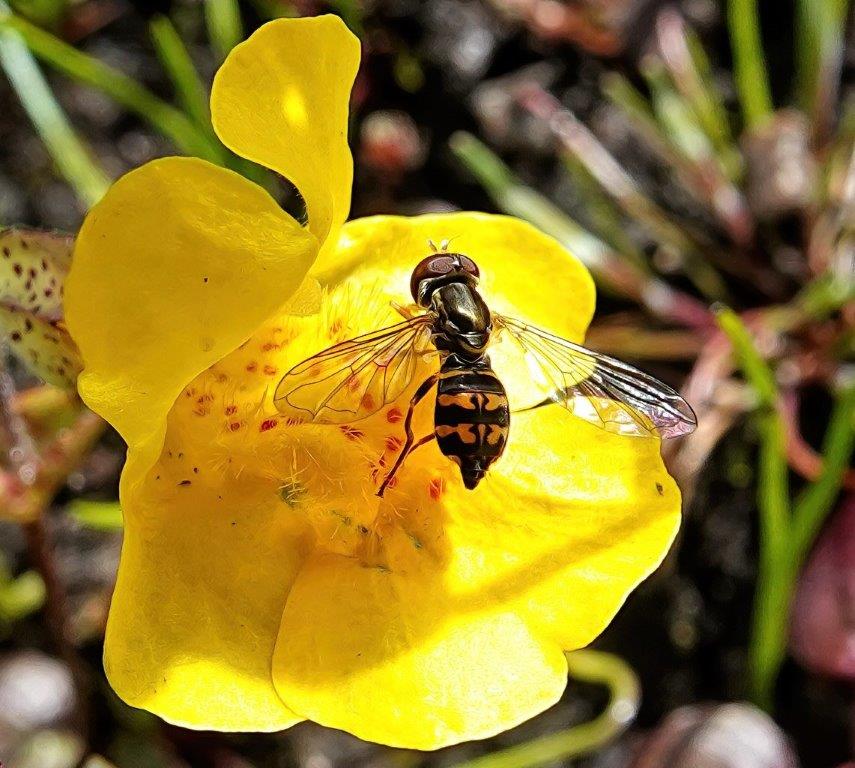
Photo Courtesy of Lynda Stevens
Butterflies and moths may be the most recognizable pollinator group because of their (often) vibrant and colourful scales and larger size. In general, butterflies pollinate during the day and moths pollinate during the night, but both are important pollinators.
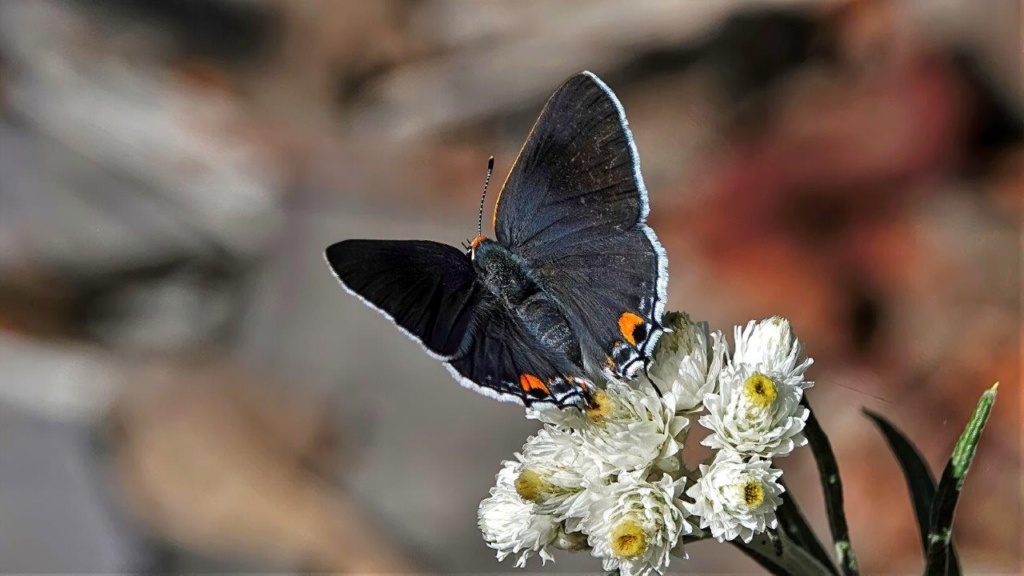
Photo Courtesy of Lynda Stevens
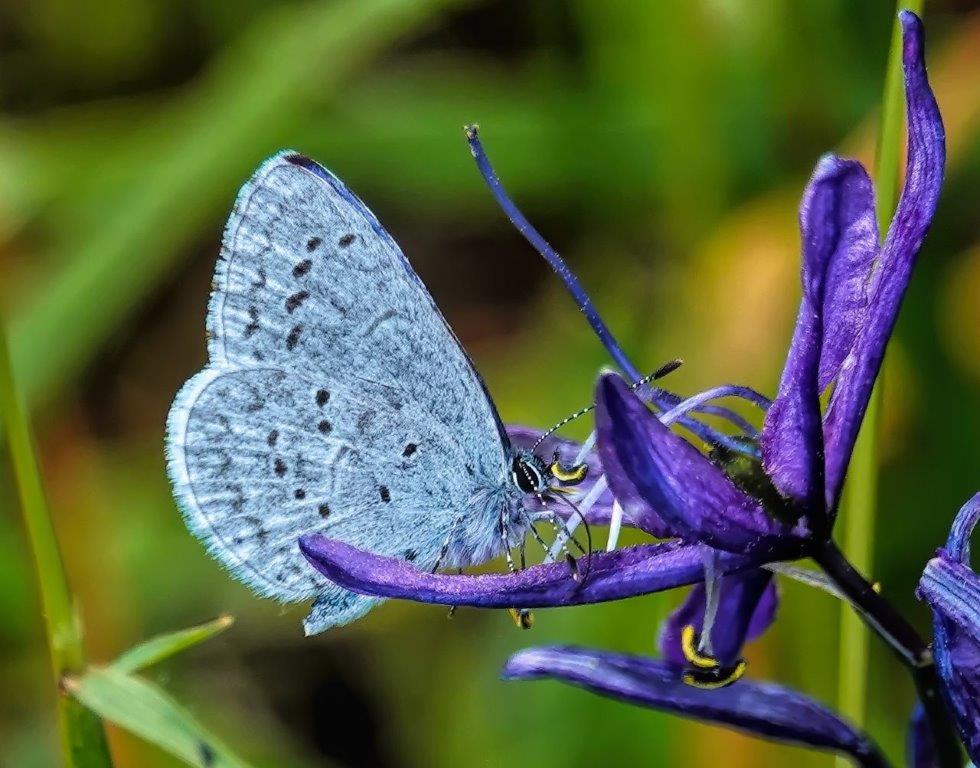
Photo Courtesy of Lynda STevens
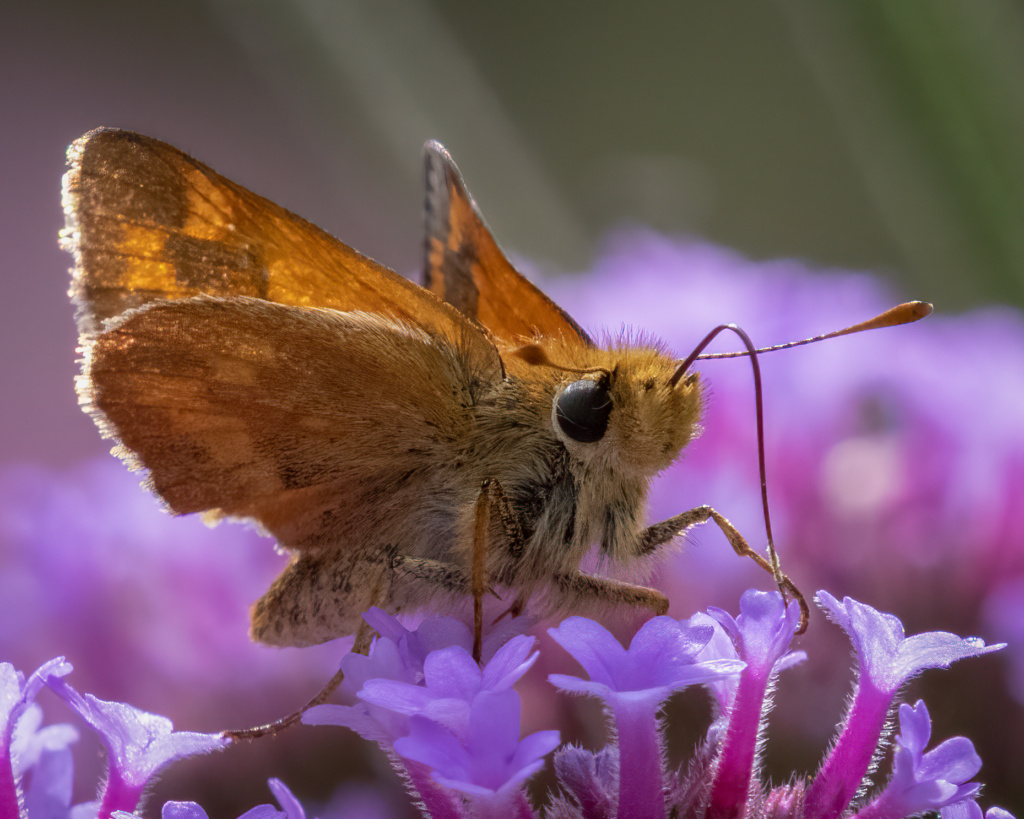
Photo Courtesy of Lynda Stevens
BIRDS
Birds are also important pollinators. In British Columbia, Hummingbirds are one of the most common avian pollinators.
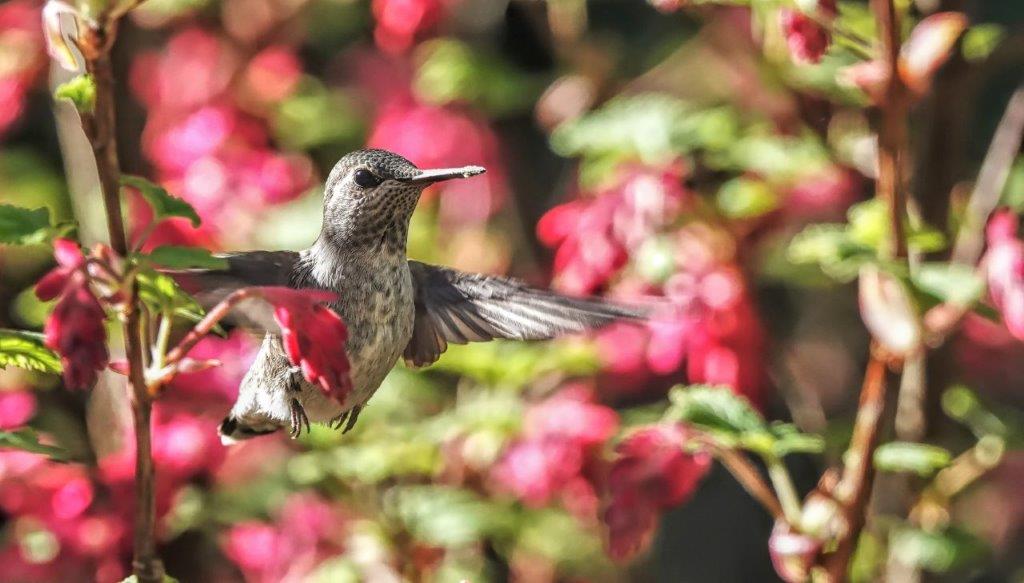
Photo Courtesy of Lynda Stevens
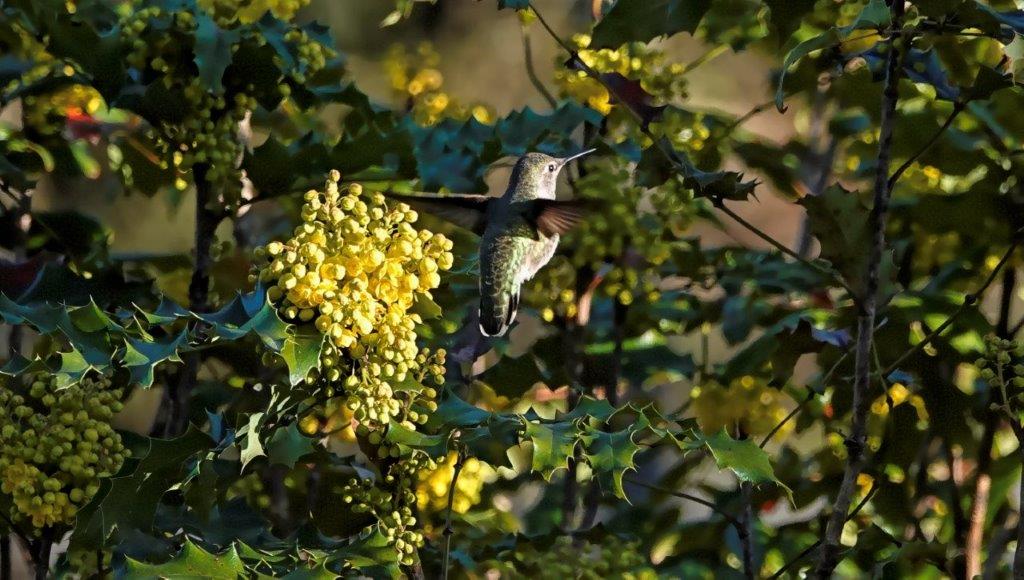
Photo Courtesy of Lynda Stevens
